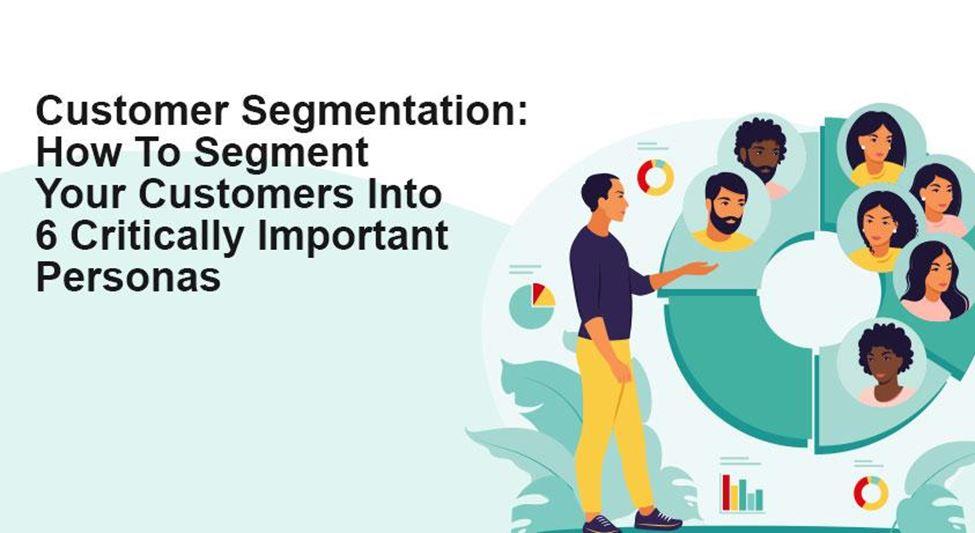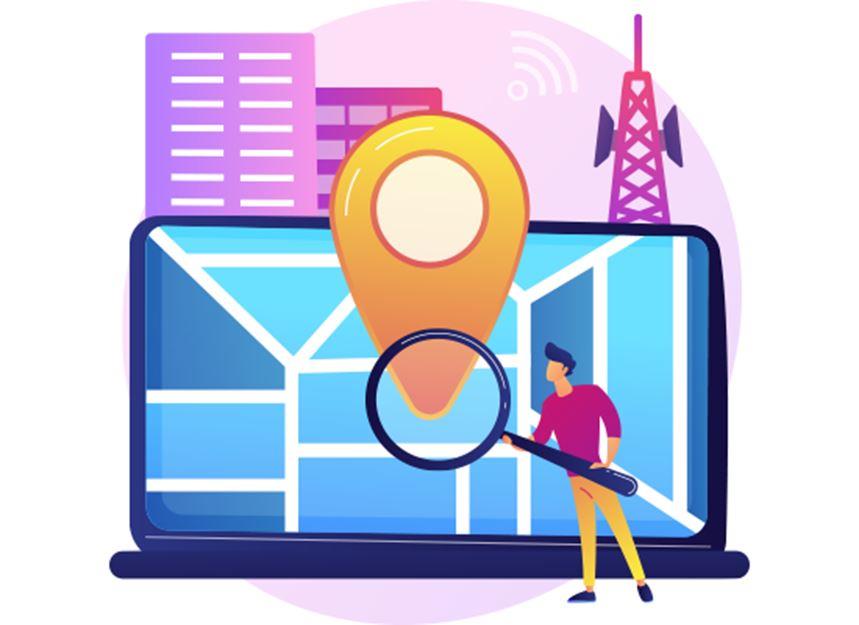
If you don’t know what the hottest thing in the online world is, it’s segmentation.
Every brand wants to do it and work in its way. But how does one segment their target audience? Segmenting a target audience is not just about understanding your “ideal customer.” It’s more than just knowing what they like; it’s essential to understand how they buy.
Customer segmentation is critical in building and correctly targeting your customer segments. But it can be a highly challenging process, especially if you don’t create the right personas.
This isn’t an article about creating fantastic personas but why you need them in the first place. I’ll also explain how you can make six critical customer segments.
Table of Contents
What Is Customer Segmentation?
Customer segmentation divides a market into different groups of customers with similar needs and wants.
Segmentation allows a company to target each group with products and services that are likely to appeal to them. It also helps companies avoid wasting time and money trying to sell products that don’t suit different segments.
Customer segmentation is based on demographic variables (such as age, gender, and income), psychographic variables (such as lifestyle), or behavioral variables (such as product usage).
Companies can use customer segmentation for marketing purposes or develop strategies or tactics for specific segments. Many email marketing tools offer advanced segments to help you, target subscribers. However, tools like Mailchimp don’t provide much in terms of segmentation, so you should look for Mailchimp alternatives.
The purpose behind segmentation determines how a company should go about it:
- If it’s just for marketing purposes, a company may want to create broad segments, not exclude potential customers.
- If it’s for developing strategies, it makes sense to narrow down the segments so that you can tailor your approach appropriately.
Why Use Customer Segmentation?
If you have multiple products or services that appeal to different customers, then customer segmentation will help you focus on the ones that will impact your bottom line the most. Here are some reasons why:
- You can better understand your customers and their needs and preferences.
- You can create more relevant marketing campaigns for each group of customers.
- You can tailor content based on their needs and preferences.
- You know what kind of content they’ll respond positively to most often (and what kind they won’t).
- You know how much time and effort it takes to communicate with each group — so you can allocate resources accordingly.
- You can deliver targeted content, increasing your customers’ conversions, engagement, and loyalty.
6 Important Customer Segmentation Models
Customer segmentation is an essential part of a business strategy. It helps companies to understand the behavior and needs of their customers so that they can focus on the most profitable ones.
There are many models for customer segmentation, but here are some of the most important ones:
- Demographic Segmentation
- Geographic Segmentation
- Psychographic Segmentation
- Technographic Segmentation
- Behavioral Segmentation
- Needs-based Segmentation
1. Demographic Segmentation

Demographic segmentation is a market segmentation defined by age, gender, income, and other demographic factors.
Demographic segmentation involves dividing a market into subgroups of buyers who share similar characteristics. It is sometimes known as lifestyle marketing or lifestyle segmentation.
The purpose of demographic segmentation is to determine how different groups of consumers differ from one another in their perceptions of products or services.
To target products effectively, marketers need to know what kinds of people buy them. This information helps them decide where to advertise and where not to advertise their products. It also helps them determine which customers are more likely than others to buy their products and services.
For instance, you can hire an email marketing agency to help identify the appropriate demographics for your email campaigns. They can then use the information to create targeted messages more likely to resonate with the audience.
2. Geographic Segmentation

Geographic segmentation is a marketing strategy to divide a market into different geographic regions. It’s based on the belief that people in other locations have different needs and wants. For example, someone living in New York City has different needs than someone living in Los Angeles.
The purpose of geographic segmentation is to determine which products or services will be sold in specific geographic areas and then target those areas with marketing strategies.
Geographic segmentation is often used as a secondary after demographic segmentation. For example, suppose you’ve already determined that men between 18 and 35 are your primary target market for your product or service. In that case, you might use geographic segmentation to narrow down your market further by dividing it into smaller geographical areas: cities or states within a country.
3. Psychographic Segmentation
Psychographic segmentation is a type of consumer segmentation that classifies people by their values, attitudes, interests, and lifestyles. It’s based on an individual’s psychological traits rather than demographics like age, gender, or income.
Psychographic segments are created using statistical analysis and data mining techniques to identify groups of consumers who have similar tastes, interests, or behaviors. You can use psychographic segmentation to target any audience. Still, it’s instrumental in marketing because it identifies people who are more likely to buy a product or service than other groups.
Companies can use psychographic segmentation to understand what types of people are likely to buy products or services and how best to reach them.
For example, if you want to sell cosmetics, you might want to focus your efforts on women who are interested in “self-expression.” If you want to sell cars, you might want to focus on consumers who value safety over status symbols like leather seats.
4. Technographic Segmentation

Technographic segmentation is the process of dividing a market into groups based on the technology they use. The aim is to identify segments that are similar in technology usage and behave similarly.
Technographics provide insight into consumers’ purchasing behaviors by identifying their lifestyles and values. It allows marketers to tailor their marketing efforts effectively to reach specific target markets.
Technographic segmentation can be used independently or as part of a more comprehensive segmentation approach that includes demographic and behavioral variables.
5. Behavioral Segmentation

Behavioral segmentation is a market segmentation that focuses on what consumers do rather than who they are or what they buy. It means a company can divide its customers into groups based on their behavior rather than demographic factors.
Companies can use behavioral data to create profiles for each customer segment and send personalized messages through email and other channels. For example, a Shopify clothing store retailer might create segments based on how often customers visit their website, which products they look at most often, and what items they purchase most frequently.
Behavioral segmentation benefits companies that offer highly personalized products or services because it allows them to tailor their messaging to individual customers’ needs.
For example, suppose a customer has repeatedly expressed an interest in buying new shoes but hasn’t made a purchase yet. In that case, you may want to send him special offers related to shoe shopping or promote your shoe sales page more prominently in his inbox, so he doesn’t miss the opportunity to purchase. You can use email marketing software for Shopify to create segments and set up autoresponders to reach customers at the right time.
6. Needs-based Segmentation
The needs-based segmentation is a technique for identifying and differentiating groups of customers based on their wants and needs.
Needs-based segmentation focuses on the difference in how customers perceive their needs and how companies can fulfill them. The process of needs-based segmentation involves finding out what the customer wants, then creating a product or service that satisfies those wants.
The most important part of this process is understanding what customers need, often much different than what they say they want.
For example, when asked about important features when buying a car, most people will say things like safety features or mileage per gallon (MPG). However, when choosing between cars, these people will focus on style and comfort factors such as how well it fits with their lifestyle or whether it looks fantastic.
Once you have identified your segments, you can focus on serving their needs better than anyone else to differentiate yourself from competitors.
Wrapping Up!
While there are other customer segmentation options, six groups is still a good baseline. This information can help you better understand your customers’ needs and make decisions to improve their experience with your company. All it takes is a little research and analysis to find out where the most profitable opportunities are for your business.


